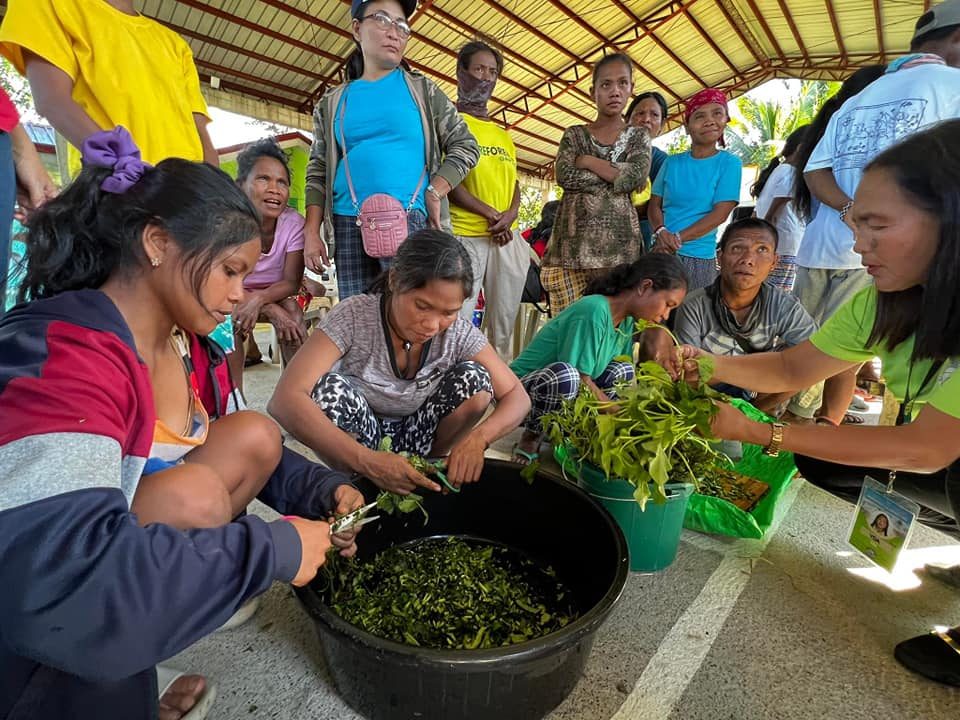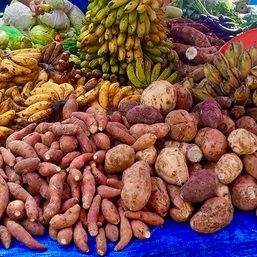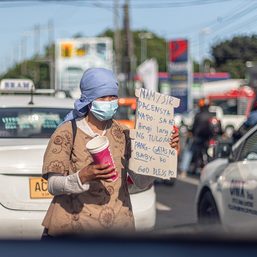SUMMARY
This is AI generated summarization, which may have errors. For context, always refer to the full article.

MANILA, Philippines – About one in seven children in Occidental Mindoro, from newborns to around five years old are stunted, with a 14% prevalence rate. Of this, 5.66% are children from the province’s indigenous communities.
Ada Sunuran, a 44-year-old mother from the Iraya Mangyan tribe in Abra de Ilog, faced the challenge of undernutrition with all five of her children.
Despite working irregular jobs for three to four days a week, Ada relies on her husband’s P300 income to feed their family. This financial constraint means they can only afford to eat twice a day.
To cope with these challenges, they mainly depend on their municipal health office’s “One Egg a Day” program.
Stunting, or pagkabansot, refers to being too short for one’s age and is an essential measure used by national agencies for nutrition planning, alongside wasting, a condition characterized by severe loss of body weight and muscle mass.
There are 1,760 stunted and severely stunted preschoolers in Abra de Ilog. With a 44% prevalence rate, the municipality topped the list of municipalities with the highest cases of stunting in the Mimaropa region, followed by its neighboring town, Paluan at 31.3%.
In 2022, both towns ranked second and third behind Mansalay, Oriental Mindoro, for the municipalities with the highest prevalence of stunting among Filipino children, 59 months old and younger, based on the latest Electronic Operation Timbang (e-OPT) Plus results of the National Nutrition Council (NNC).
From 15.92% in 2021, the prevalence rate of stunting in Occidental Mindoro shrank to 14% in 2023, while the rate in the Mimaropa region also declined to 12.12% last year from 15.4% stunting prevalence in 2021.
Lack of livelihood
For Abra de Ilog Municipal Nutrition Action Officer (MNAO) Erly Belen, poverty is the most dominant factor behind the town’s years-long strike in the NNC ranking.
Due to lack sources of income, many indigenous families have to limit their meals to only twice a day. Some depend on local government feeding programs and nutrition services, which often prove insufficient to provide daily meals for their families, especially those with many members.
As of December 2023, the IBON Foundation reported a family living wage of P1,196 in the Mimaropa region, while the minimum wage was P395. A P40 increase was approved last November.
Poverty led local nutrition offices to implement livelihood programs prioritizing the IPs, including the “Gulayan sa bakuran” (vegetable farm in the yard) program, which distributed garden tools and seedlings to the communities. A goat dispersal project was also given to 93 beneficiaries in Abra de Ilog last May.
Geography and environment
Michelle Bernardo, Paluan’s MNAO, said challenges like geographical isolation and adverse weather conditions hinder the Mangyan communities’ ability to travel downhill and buy supplies on the mainland even if they have the funds to buy goods. This, she said, is especially true for Indigenous Peoples (IPs) living in mountainous and island barangays.
Bernardo pointed out that some Mangyan communities do not even have access to safe drinking water, making them vulnerable to water-related health risks.
Kayla Marie Espejo, a nutritionist-dietitian at the Occidental Mindoro Provincial Health Office, said there was a need to further strengthen the barangay nutrition functionality in the province.
Espejo, PHO nutritionist-dietitian, Glenda Cortuna, and Josielyn Manzano, acting provincial nutrition action officer, said funding and attention to the health sector, particularly nutrition programs, were lacking.
They said the deployment of full-time nutrition officers in some local governments also faced delays. These officers would have concentrated on improving nutrition in specific communities within the province.
IP cooperation
Belen noted that there were instances when Mangyan families themselves sometimes showed less cooperation with their programs. She said some IP families have not even participated even when food was provided through a feeding program and the only thing needed was for them to collect them from the barangay health station (BHS).
NNC-Mimaropa Nutrition Program Coordinator Ma. Eileen Blanco, however, said some IPs were preserving their culture, and these cultural practices should be respected. Instead of changing their culture, the focus should be on teaching them basic healthcare activities, she said.
“Our goal is not to contradict cultures. We should converse on how to make our programs culture-sensitive. We are willing to cooperate but they have cultures that are not applicable to us and we have ones that are not to them,” Blanco said.
In July 2023, the NNC reported that only 13.8% of Filipino children aged six to 23 months are receiving a needed diet for optimal growth.
The Occidental Mindoro PHO is now planning to focus more on strengthening health programs for pregnant Mangyan women to ensure good nutrition for the first 1,000 days of indigenous children and prevent new cases of stunting in the province. – Rappler.com
Chris Burnet Ramos is an Aries Rufo Journalism fellow.
Add a comment
How does this make you feel?



![[OPINION] Hungry children do not make good students](https://www.rappler.com/tachyon/2024/01/imho-PH-PISA-scores-jan-27-2024.jpg?resize=257%2C257&crop=260px%2C0px%2C720px%2C720px)















There are no comments yet. Add your comment to start the conversation.